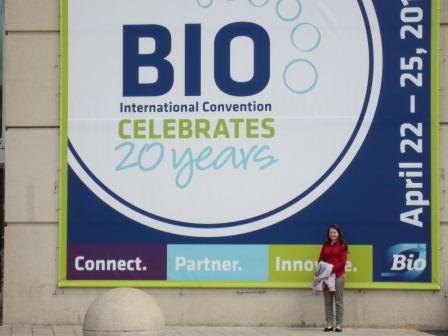On Wednesday I attended a very interesting session: “Not the Usual Suspects: Non-traditional IP from Non-traditional Sources.” The panel presenters from the OTT from the University of Illinois shared how they realized one day that they were only interacting with a very small part of their campus. To kick start communication with the rest of the campus, they held an open meeting with the deans of the humanities and social science departments to discuss what the OTT does and what types of resources they could offer.
They have since partnered with foreign language department, industrial design, music, sociology, psychology and architecture. The OTT has made the commitment to the entire campus to listen and learn, and to adapt existing processes and tools (within reason) in order to meet non-traditional IP needs.
One presenter from a consulting company mentioned something important to think about when opening up OTT resources to departments other than STEM – impact is not always proportional to dollars. These projects are still important.
The consultant also talked about licensing opportunities for university collections of art, music, artifacts, antique maps, and books. These licensing agreements are often very different from tech agreements in that they are limited term, payout minimum royalties in advance and often specify how the work is to be used (replicated on t-shirts, used as a logo for software, etc.). This type of licensing protects the university’s investment in the collection.
Today on the closing day of the conference, I attended a session which was essentially an open discussion about faculty expectations of tech transfer offices. Many topics were brought up in this session both from faculty representatives and OTT representatives such as faculty motivation for disclosing their IP (money, altruism), the need for consistent clear expectations and communication from both parties, and showing the value of what the OTT can bring to the inventor.
One university representative talked about having a faculty liaison act as a bridge between OTT and the inventor. When OTT has to say no to a technology or invention, the inventor might doubt that the OTT office has done its due diligence, but if a colleague explains why it can’t move forward, they are often more accepting of the news.
One panel presenter who has been on both the university and the corporate side of IP, suggested that the OTT be more involved with the brainstorming around how ideas and technology could be used. He gave the example of a chemist who is very interested in how certain molecules are bonding, but is unsure of how this would be applicable commercially. The OTT staff could bring an outside perspective on ways the technology could be used.
Another suggestion from the audience is using a third-party patentability and licensing analyst. This negates any perception of the tech transfer office being biased toward individual faculty or departments.
